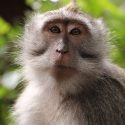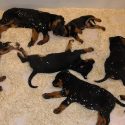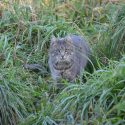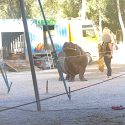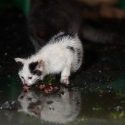Arles: a priest protests against bullfighting surrounded by ‘dead bulls’
Arles: a priest protests against bullfighting surrounded by ‘dead bulls’
11.04.2023
Arles: a priest protests against bullfighting surrounded by ‘dead bulls’
Exploitation for shows
Father Robert Culat, a priest from Avignon, has condemned bullfighting a short distance from the Arles arena with PETA and One Voice.
“Torturing animals is a sin”: this was the message brandished on Monday 10 April 2023 in Arles by Father Robert Culat, catholic priest of the Avignon Diocese, on the Easter holiday. The protest was held not far from the Arles Arena prior to the Rejón bullfight, alongside PETA and One Voice activists wearing bull horns and lying on the ground to pay homage to the victims of bullfighting and remind people that this cruel activity totally disagrees with the values of compassion that the two associations, the catholic church, and our society in general support.
Photo credit: Peta
“Every bull, like any animal, is a sentient being, capable of experiencing suffering. It is a creature of God worthy of respect, and as Pope Francis taught, ‘every act of cruelty towards any creature is contrary to human dignity’”, stated Father Robert Culat. “As part of the Easter celebrations, bullfights are held in Arles. But Easter is a celebration of the life of the risen Christ, of he who replaces the sacrifice of animals with the sacrament of mass – how is it possible to associate the victory of life in the resurrection with a show that causes death?”.
In one of his prayers, Pope Francis pointed out human beings’ responsibility: “Dear Lord, show us our place in this world as instruments of your affection for all beings on this earth, as none are forgotten by you”. However, during a bullfight, many terrified bulls are tortured one after the other. They are tormented and chased with horses, being poked with cattle prods and banderillas in their backs and necks. Whilst they are weakened by their bleeding, the matador
(killer) tries to finish them off, but it is not rare for the bulls to die by drowning in their own blood when he misses his target and the sword pierces the lungs instead of the heart. Often, while it is the spinal cord that is affected, the animals, dragged out of the arena by chains, are paralysed but still conscious.
PETA, whose motto specifically states that “animals do not belong to us and [that] we do not have to use them for our entertainment” and who are opposed to speciesism, the ideology that supposes that humans are superior to other animals, is calling for the outdoor slaughtering that is bullfighting to be condemned to the pages of history.
One Voice has led numerous investigations in the field of bullfighting and particularly opposes children being trained to kill young bulls and attending bullfights. The Association, who calls for animal and planetary ethics, also supports a ban on cultural exception being applied to what is no more or less than the staging of acts of cruelty on sentient beings.
PETA and One Voice encourage those who are against this barbaric ‘tradition’ to write to the mayors of bullfighting towns, including Arles, to express to them the strong opposition that there is today for bullfighting. In fact, 75% of the population is in favour of banning bullfights in France.
Translated from the French by Joely Justice

